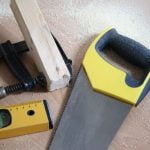A home improvement loan can be a game-changer for homeowners looking to upgrade their properties. Whether it’s creating the kitchen of your dreams, adding an extra bedroom, or giving your old bathroom a complete makeover, these loans provide the necessary funds to transform your house into your dream home. But how many years is a home improvement loan?
In this article, we will delve into the factors that determine the duration of a home improvement loan, discussing both short-term and long-term options and weighing their pros and cons. By understanding the basics of home improvement loans and considering crucial factors, you will be better equipped to select the ideal loan duration for your specific project.
When it comes to financing home improvements, a home improvement loan is often preferred by homeowners due to its simplicity and accessibility. This type of loan allows individuals to borrow specific amounts for residential upgrades without putting their homes at risk. The duration of a home improvement loan depends on multiple factors that lenders carefully consider when determining repayment terms.
These factors include the borrower’s creditworthiness, the amount borrowed, repayment ability, and the purpose and type of the loan (secured or unsecured). Understanding how these elements influence the length of a home improvement loan is crucial in making an informed decision.
In this article, we will explore common loan terms offered by lenders for home improvement projects, shedding light on shorter and longer loan durations. We will also examine how different term lengths impact monthly payments and overall interest paid over time.
Additionally, we will delve into the advantages and disadvantages of both short-term and long-term home improvement loans so that you can make an informed choice based on your unique circumstances. Lastly, we will discuss essential factors you should consider before choosing a specific loan term and offer practical tips for successfully completing your home improvement loan repayment journey.
The Factors Influencing Loan Duration
Factors Considered by Lenders
When it comes to determining the duration of a home improvement loan, lenders take several key factors into consideration. One important factor is the borrower’s creditworthiness. Lenders will assess the borrower’s credit score and history to determine their ability to make timely payments. A higher credit score often indicates a lower risk for the lender, which may result in a shorter loan duration.
Another factor that lenders consider is the loan amount requested. Larger loan amounts typically require longer repayment terms to ensure that borrowers can comfortably make their monthly payments. On the other hand, smaller loan amounts may have shorter durations as they can be repaid more quickly.
Additionally, lenders assess the borrower’s repayment ability when determining the length of a home improvement loan. This includes evaluating the borrower’s income, employment stability, and debt-to-income ratio. If a borrower has a stable income and low existing debt, they may be offered a shorter loan term since they are seen as less of a risk.
Impact of Loan Purpose and Type
The purpose and type of home improvement loan also play a role in determining its duration. Secured loans, such as home equity loans or lines of credit, are backed by collateral (usually the borrower’s property), which reduces the lender’s risk. This can lead to longer loan terms since lenders feel more comfortable offering extended periods for repayment.
Unsecured loans, on the other hand, do not require collateral and typically have shorter repayment terms due to higher risk for lenders. These loans usually have fixed interest rates and are more commonly used for smaller projects where borrowers can repay them quickly.
The purpose of the loan also impacts its duration. Loans intended for minor renovations or repairs may have shorter terms compared to those meant for major remodeling or larger-scale projects. Lenders will consider factors like project complexity, estimated cost, and potential increase in property value when determining the loan duration.
Loan Duration and Monthly Payments
The length of a home improvement loan has a direct impact on monthly payments. Generally, shorter loan terms result in higher monthly payments but lower overall interest costs. This is because the principal amount is divided into fewer payments and less time for interest to accumulate. In contrast, longer loan terms offer lower monthly payments but may result in higher overall interest paid over the life of the loan.
Borrowers should carefully evaluate their financial situation and budget constraints to determine what they can comfortably afford as monthly payments. It’s important to strike a balance between affordable monthly payments and reasonable interest costs, taking into account both current income and potential future changes in financial circumstances.
The Common Loan Terms
When considering a home improvement loan, one of the key factors to understand is the duration of the loan. Home improvement loans can have varying lengths, depending on several factors. In this section, we will provide a breakdown of common loan terms offered by lenders for home improvement projects and explore the advantages and disadvantages of shorter and longer loan durations.
Common Loan Terms:
- Short-term loans (1-5 years): These loans have a shorter duration, typically ranging from 1 to 5 years. They are ideal for smaller projects or projects with a lower budget. The advantage of short-term loans is that you can pay off the debt more quickly. With a shorter repayment period, you will generally pay less interest over time.
- Medium-term loans (6-10 years): Medium-term loans have a duration between 6 to 10 years. They strike a balance between shorter and longer loan terms, offering borrowers more time to repay their debt without stretching it out too long.
- Long-term loans (11-30 years): Long-term home improvement loans usually have durations ranging from 11 to 30 years. These types of loans are suitable for large-scale renovations or major remodeling projects where substantial funds are required upfront.
Advantages and Disadvantages:
- Shorter Loan Terms: The benefit of shorter loan terms is rapid debt repayment and potentially lower overall interest paid. However, shorter terms may result in higher monthly payments, making it essential to assess your budget before opting for this type of loan.
- Longer Loan Terms: Longer terms provide homeowners with lower monthly payments that may be easier to manage within their budgets. They also allow for more extensive renovations or larger scale projects since funds are spread out over an extended period. However, borrowers should consider that longer terms often result in paying more interest throughout the duration of the loan.
Before selecting a specific loan term, it is vital to carefully evaluate your project scope, budget, and future plans for homeownership. Consider the amount of money needed for your planned improvements, your ability to make monthly payments comfortably, and how long you plan to stay in the home. By assessing these factors, you can make an informed decision about the optimal loan duration for your home improvement project.
In the next section, we will discuss the pros and cons of short-term and long-term home improvement loans to help you further understand which option may be best suited for your specific needs.
Short-Term Home Improvement Loans
Short-term home improvement loans are a popular financing option for homeowners looking to complete smaller projects or make quick repairs. These loans typically have a shorter duration, usually ranging from one to five years. There are several pros and cons associated with short-term home improvement loans that borrowers should consider before making their decision.
Pros of Short-Term Home Improvement Loans
Faster Loan Repayment
One of the main advantages of short-term home improvement loans is the ability to repay the loan faster. With a shorter duration, borrowers can quickly eliminate their debt and focus on other financial goals. This can be particularly beneficial for individuals who prefer not to carry long-term debt and want to minimize interest expenses.
Potentially Lower Interest Rates
Short-term home improvement loans often come with lower interest rates compared to longer-term options. Lenders typically offer better terms for shorter durations as they perceive them as less risky. By opting for a shorter loan duration, borrowers can secure more favorable interest rates, saving them money in the long run.
Cons of Short-Term Home Improvement Loans
Higher Monthly Payments
While short-term home improvement loans offer faster repayment and potentially lower interest rates, they also come with higher monthly payments. The shorter duration means that borrowers must distribute their repayment over a condensed period, resulting in larger monthly installments. This can put strain on monthly budgets and may not be feasible for individuals with limited disposable income.
Limited Financing Options for Larger Projects
Another downside of short-term home improvement loans is that they may not provide sufficient financing for larger-scale projects. These loans are often capped at a certain amount, which may be inadequate if extensive renovations or major upgrades are required. Borrowers seeking substantial funds for their home improvements may need to explore alternative financing options like home equity loans or lines of credit.
Long-Term Home Improvement Loans
When considering a home improvement loan, it is important to understand the pros and cons of long-term loan options. Long-term home improvement loans typically have loan durations that range from five to twenty-five years. Here are some key advantages and disadvantages to consider when deciding if a long-term home improvement loan is right for you.
Pros:
- Lower monthly payments: One of the main advantages of a long-term home improvement loan is that it often leads to lower monthly payments compared to shorter-term loans. This can provide homeowners with more breathing room in their budget and allow for easier financial planning.
- Funding extensive renovations: Long-term loans are ideal for larger-scale renovation projects that require substantial funding. Whether you’re adding an extra room or completely remodeling your home, a long-term loan gives you the ability to finance these major projects without feeling financially strained.
- Potential tax benefits: In some cases, the interest paid on a long-term home improvement loan may be tax-deductible. Homeowners should consult with a tax professional to determine if they qualify for any tax benefits related to their specific situation.
Cons:
- Higher overall interest paid: The longer the duration of the loan, the more interest you will end up paying over time. While this may not be a significant concern for everyone, it is important to factor in the total cost of borrowing before committing to a long-term loan.
- Limited flexibility for future borrowing: Taking on a long-term home improvement loan may impact your ability to secure additional financing in the future. Lenders consider your existing debt obligations when determining your eligibility for new loans or lines of credit, which could restrict your options down the line.
- Extended debt commitment: Choosing a longer loan term means committing to debt for an extended period, which may not be desirable for everyone. It’s essential to evaluate your personal financial goals and determine if having a long-term debt obligation aligns with those goals.
Before deciding on a long-term home improvement loan, carefully consider your specific project needs and financial situation. While lower monthly payments and the ability to fund extensive renovations may be appealing, it is crucial to weigh these advantages against potential disadvantages such as higher overall interest paid and limited flexibility for future borrowing. Thoroughly assessing your circumstances will help you select the ideal duration for your home improvement loan.
Essential Factors to Consider Before Choosing a Home Improvement Loan Duration
When choosing a home improvement loan duration, there are several essential factors that homeowners should consider. These factors can greatly impact the overall cost and feasibility of the loan repayment. By carefully evaluating these factors, homeowners can make an informed decision on the ideal loan duration for their specific project.
One important factor to consider is the scope of the project. Larger and more complex projects may require a longer loan duration to spread out the cost of repayment over time. On the other hand, smaller projects may be completed within a shorter timeframe, allowing homeowners to opt for a shorter loan duration and pay off the debt sooner.
Another factor to take into account is the budget for the home improvement project. Homeowners should assess their financial situation and determine how much they can comfortably afford in monthly loan payments. Choosing a longer loan duration can result in lower monthly payments but may ultimately lead to paying more interest over time. Conversely, opting for a shorter loan duration will have higher monthly payments but can save on interest expenses in the long run.
Additionally, homeowners should consider their future plans for homeownership when deciding on a loan duration. If they plan on selling or refinancing their property in the near future, it may be beneficial to choose a shorter loan duration to pay off the debt before these changes occur. However, if they anticipate maintaining ownership of their property for an extended period, a longer loan term with lower monthly payments may be more manageable.
| Loan Duration | Monthly Payments | Total Interest Paid |
|---|---|---|
| 5 years | $500 | $2,000 |
| 10 years | $250 | $5,000 |
| 15 years | $166.67 | $7,500 |
| 20 years | $125 | $10,000 |
These figures demonstrate the impact of loan duration on monthly payments and total interest paid over the life of the loan. Homeowners can use this information as a starting point to assess their financial capabilities and select a loan duration that aligns with their needs and future plans.
By carefully considering the scope of the project, budget constraints, and future homeownership plans, individuals can make an informed decision about the ideal duration for their home improvement loan. Taking these factors into account will ensure that homeowners choose a loan that best suits their needs and allows them to successfully complete their renovation project while managing their financial obligations effectively.
Understanding Loan Repayment
Repaying a home improvement loan is an important aspect of the borrowing process. To ensure that you successfully complete your loan, there are several tips and strategies that you can follow. By adhering to these guidelines, you can effectively manage your finances and avoid any unnecessary complications or difficulties.
- Budget Wisely: The first step to successfully completing your home improvement loan is to create a budget. Take the time to determine how much you can comfortably afford to pay each month towards your loan repayment. This includes considering your monthly income, expenses, and any other financial obligations you may have. By setting a realistic budget, you can better plan and allocate funds towards repaying your loan.
- Make Regular Payments: Once you have determined your monthly budget, it is crucial to make regular payments towards your home improvement loan on time. Late or missed payments can not only negatively impact your credit score but may also result in late fees or penalties from the lender. Set up automatic payments if possible to ensure that you never miss a payment deadline.
- Consider Paying Off Early: If you are able, consider paying off your home improvement loan early. Making additional payments towards the principal over time can help reduce the overall interest paid and shorten the duration of the loan. However, before doing so, check with your lender to see if there are any prepayment penalties or fees associated with early repayment.
| Tip | Description |
|---|---|
| Budget Wisely | Create a realistic budget to determine how much you can afford for monthly loan repayments. |
| Make Regular Payments | Ensure timely repayment by setting up automatic payments and adhering to payment deadlines. |
| Consider Paying Off Early | If possible, make additional payments towards the principal to reduce overall interest and shorten the loan duration. |
Conclusion
In conclusion, selecting the ideal duration for your home improvement loan requires careful consideration of various factors. Throughout this article, we have discussed the basics of home improvement loans and the key factors that influence their duration. We have also explored the pros and cons of both short-term and long-term loans, highlighting the advantages and disadvantages of each option.
When deciding on a loan duration, it is crucial to assess your individual circumstances. Consider your project scope, budget, and future plans for homeownership. Evaluate whether you prioritize faster loan repayment or lower monthly payments. Additionally, take into account your creditworthiness, loan amount, and repayment ability.
It is advisable to consult with lenders to better understand the terms they offer and how they align with your needs. Engage in open communication with lenders to determine the optimal loan duration. They can provide guidance based on their expertise and help you make an informed decision.
Regardless of the loan duration you choose, there are certain tips that can contribute to successful loan repayment. Effective budgeting allows you to allocate sufficient funds towards repayment without straining other financial obligations. Making regular payments on time helps ensure consistent progress towards paying off the loan. Lastly, if possible, consider paying off the loan early to save on interest costs.
Frequently Asked Questions
What is the longest term for a home improvement loan?
The longest term for a home improvement loan can vary depending on the lender and the specific circumstances of the borrower. Typically, home improvement loans have terms ranging from one to five years, but it is possible to find lenders who offer longer terms, such as seven or even ten years.
However, it’s important to note that longer-term loans generally come with higher interest rates and may result in paying more interest over time.
How much interest will I pay on a home improvement loan?
The amount of interest you will pay on a home improvement loan depends on various factors, including the loan amount, the interest rate, and the length of the loan term. The interest rate can vary depending on your creditworthiness and the current market conditions.
Generally speaking, borrowers with better credit scores tend to qualify for lower interest rates. To determine how much interest you will pay, you can use an online loan calculator or consult with your lender for an estimate based on your specific loan details.
What is the difference between a home loan and a home improvement loan?
The main difference between a home loan and a home improvement loan lies in their purpose and scope. A home loan, also known as a mortgage, is typically used to finance the purchase of a property or refinance an existing mortgage. It allows borrowers to obtain funds for buying a new home or residential property.
On the other hand, a home improvement loan is specifically designed to cover expenses related to improving or renovating an existing property. These loans are often used to fund projects such as remodeling kitchens or bathrooms, adding an extension, or making necessary repairs and upgrades within the house. Unlike a regular mortgage which finances the purchase itself, a home improvement loan is solely intended for enhancing the value or livability of an already owned property.

I’m thrilled to have you here as a part of the Remodeling Top community. This is where my journey as an architect and remodeling enthusiast intersects with your passion for transforming houses into dream homes.





